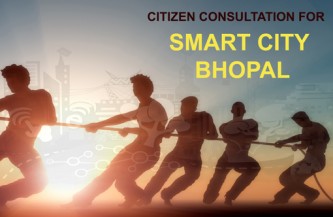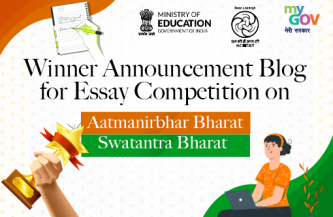Making India a digital power

In 2014, a country tired of six decades of the Congress’s politics of a dynasty, motley coalitions and corrupt governments, voted Narendra Modi to office as Prime Minister of India. He promised change and a new direction in governance. The last eight years have seen him steadily progressing towards building this New India.
Before 2014, the India narrative was just about the country being a big market opportunity. This opportunity came with accepted caveats — governance dysfunction, corruption, nepotism, policy inconsistency, red tape and crony capitalism. This state of affairs was accepted as normal as far back as the 1980s when the then PM Rajiv Gandhi said that for every one rupee that leaves Delhi, only 15 paise reaches the citizens.
In pre-Modi India, a few politically connected families and groups cornered all the opportunities and capital. For instance, a Credit Suisse report, ‘House of Debt’, divulged that 98 per cent of the net worth of India’s entire banking system was cornered by 10 influential families. Entrepreneurship and successful startups were rare exceptions. India was colloquially referred to as an elephant — big, slow-moving and unwieldy. Our revenues from tax collection remained low and our tax-GDP ratio was abysmal compared to other major developing economies.
In 2014, citizens of India voted for change and gave a resounding mandate to Modi, who had worked his way up from a poor family to becoming the CM of Gujarat. In Gujarat, he had already demonstrated the contrast in his political and governance model with a focus on medium to long-term transformations rather than short-term populism with projects like the Sabarmati Riverfront development. He received another, stronger mandate in 2019 as well as in many state elections.
PM Modi spent the first 3-4 years in office addressing the deep damage to the economy and institutions of governance and rebuilding the lost trust of citizens in the government. He inherited a shattered economy. He steadily rebuilt the financial sector, investor confidence and trust in the government. He has transformed the work culture within the government, making public service a relentless crusade for change and prosperity.
There are several reforms and governance initiatives that have successfully steered India to its current strength. But his commitment to technology from very early on is a testament to PM Modi’s vision and instincts about opportunities for India and Indians. The Digital India programme is one such example. Digital India was launched with three clear objectives: To transform citizens’ lives, governance and democracy; expand the digital economy, create jobs and attract investments; and make India the leader in the realm of technology — a provider rather than a consumer of technology.
A report carding of Digital India’s performance shows impressive progress. Every rupee released from Delhi reaches the bank accounts of beneficiaries without any delay or corruption. Thus far, the government has transferred more than Rs 17 lakh crore through DBT while saving Rs 2.2 lakh crore. Today, India has the world’s fastest-growing and most vibrant startup ecosystem with close to 70,000 registered startups and around 100 unicorns, with a unicorn coming up every week. The growth trajectory of these startups was determined by their hard work, passion, ability to innovate and availability of capital — not by political connections or family background.
Thanks to the most significant reform in indirect taxation through the GST and tax compliance, India has registered its highest ever collections. Revenue increased from Rs 22 lakh crore in FY 21 to Rs 27 lakh crore in FY 22 — a whopping 22 per cent growth. This year alone, the Centre is investing over Rs 7.5 lakh crore in infrastructure building.
The Covid-19 pandemic was a litmus test for leaders across the globe. The global superpowers continue to grapple with third and fourth waves but India, under PM Modi, emerged as a resilient nation. It successfully delivered over 200-crore vaccination shots by pulling off the world’s largest voluntary and technology-driven vaccination programme. India protected its small businesses and the poor – the latter continue to receive foodgrains under the world’s largest distribution programme launched during the pandemic, the PM Garib Kalyan Anna Yojana (PMGKAY). And even as economies falter and stumble, PM Modi’s policies have resulted in India being the fastest-growing major economy, attracting the highest ever FDIs ($ 83.57 billion). India also set new records for goods ($400 billion ) and services ($254 billion) exports.
Digital India played a significant role in India’s response to the pandemic. It ensured that the government could reach people in remote parts of the country. Health, education and other essential services migrated swiftly to the online mode. It would not be an aberration to say that post-Covid, India emerged as a preeminent nation in the use of technology for governance.
Thanks to the relentless hard work and focus on the future of New India by PM Modi, India post-Covid has emerged as a trusted partner to the international community. The rapid digitalisation of the world along with a new focus on trust in the global supply chains for digital products and services presents tremendous opportunities for India and its youth. PM Modi has referred to the coming decade as New India’s Techade. Young Indians and startups are presented with opportunities like never before as a result of the last eight years of dedicated work by the PM. It is now up to all of us to engage in a collective “sabka prayas” to realise New India’s economic potential.
[The Blog was first published in The Indian Express and the writer is Shri Rajeev Chandrasekhar, Minister of State for Electronics & IT, Skill Development & Entrepreneurship.]





